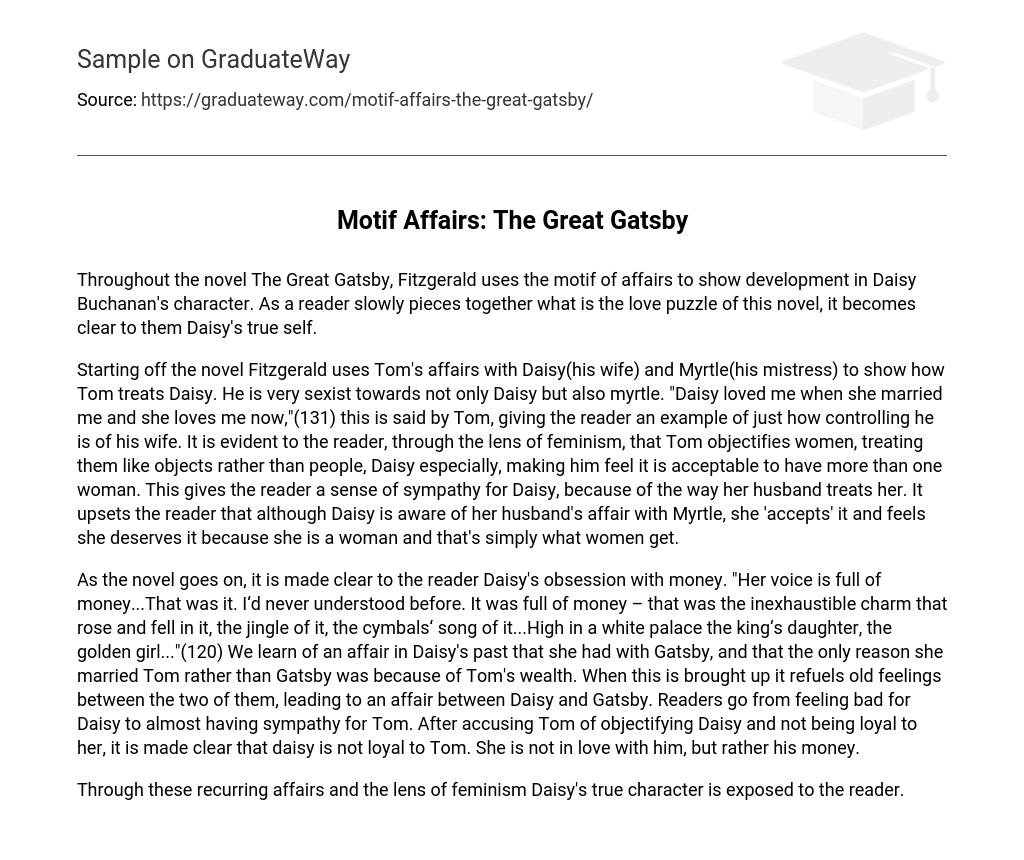Throughout the novel The Great Gatsby, Fitzgerald uses the motif of affairs to show development in Daisy Buchanan’s character. As a reader slowly pieces together what is the love puzzle of this novel, it becomes clear to them Daisy’s true self.
Starting off the novel Fitzgerald uses Tom’s affairs with Daisy(his wife) and Myrtle(his mistress) to show how Tom treats Daisy. He is very sexist towards not only Daisy but also myrtle. “Daisy loved me when she married me and she loves me now,”(131) this is said by Tom, giving the reader an example of just how controlling he is of his wife. It is evident to the reader, through the lens of feminism, that Tom objectifies women, treating them like objects rather than people, Daisy especially, making him feel it is acceptable to have more than one woman. This gives the reader a sense of sympathy for Daisy, because of the way her husband treats her. It upsets the reader that although Daisy is aware of her husband’s affair with Myrtle, she ‘accepts’ it and feels she deserves it because she is a woman and that’s simply what women get.
As the novel goes on, it is made clear to the reader Daisy’s obsession with money. “Her voice is full of money…That was it. I‘d never understood before. It was full of money – that was the inexhaustible charm that rose and fell in it, the jingle of it, the cymbals‘ song of it…High in a white palace the king‘s daughter, the golden girl…”(120) We learn of an affair in Daisy’s past that she had with Gatsby, and that the only reason she married Tom rather than Gatsby was because of Tom’s wealth. When this is brought up it refuels old feelings between the two of them, leading to an affair between Daisy and Gatsby. Readers go from feeling bad for Daisy to almost having sympathy for Tom. After accusing Tom of objectifying Daisy and not being loyal to her, it is made clear that daisy is not loyal to Tom. She is not in love with him, but rather his money.
Through these recurring affairs and the lens of feminism Daisy’s true character is exposed to the reader.





